Programme

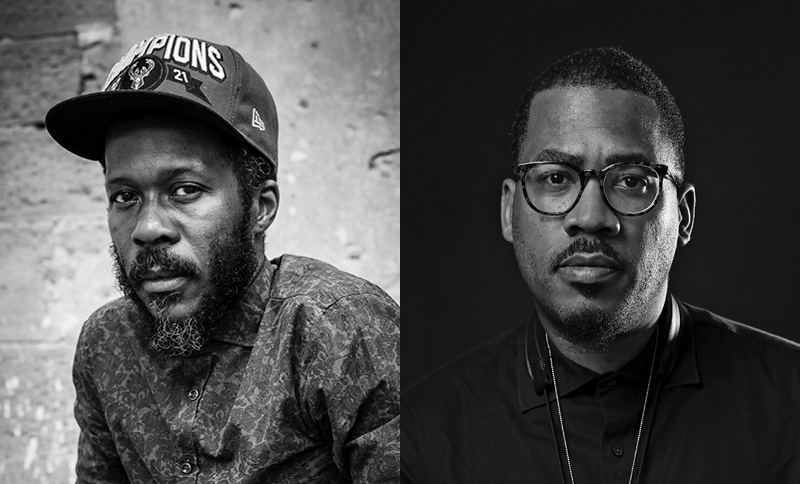
Joe Sanders‘ Parallels
James Brandon Lewis Trio
28/4/2025, 19.30
Cabaret des Péchés
Since leaving the Midwest in 2002 to attend the Brubeck Institute in California, bassist Joe Sanders has had the privilege of performing alongside some of the greatest jazz figures. His impressive journey continued with collaborations with legendary artists such as Dave Brubeck, Christian McBride, Terence Blanchard, Ron Carter, Roy Hargrove, John Clayton, Charlie Haden, Herbie Hancock, Charles Lloyd, and Wayne Shorter—an extraordinary roster by the age of forty.
After completing his studies at the Brubeck Institute and further training at the Thelonious Monk Institute, Sanders moved to New York in 2007. There, he continued his education through various programs while actively engaging with the city‘s jazz scene. He built deep musical and personal relationships with both his generation‘s musicians and jazz legends, mastering both classic styles and contemporary trends.
2012 was a breakthrough year for Joe Sanders when he released his debut solo album, Introducing Joe Sanders, on the acclaimed Criss-Cross label. A year later, he joined Charles Lloyd’s band, where Lloyd not only helped Sanders refine his musical abilities but also expanded his understanding of the philosophical and emotional dimensions of shared music.
In 2017, as the leader of his own band, Joe Sanders’ Infinity, he released his second album, Humanity, a musical commentary on a world filled with violence and his desire for compassion and love among people. During the Covid-19 pandemic, Sanders focused on self-education, exploring electronic tools for his music, as well as honing his production, composition, and skills on other instruments, particularly piano and drums. In October 2024, he released his third album, Parallels, a product of this self-study. The album features both live recordings and music produced in his home studio, where Sanders played all the instruments himself.
For his performance at JazzFestBrno, however, Joe Sanders will present his original music in a more traditional quartet setup.
Line-up:
Joe Sanders – double bass, Logan Richardson – alto saxophone, Seamus Blake – tenor saxophone, Gregory Hutchinson – drums
Saxophone legend Sonny Rollins is not known for flattery, but he made an exception for his fellow saxophonist James Brandon Lewis: „When I listen to you, I listen to Buddha, I listen to Confucius… I listen to the deeper meaning of life. You help keep the world in balance.“
James Brandon Lewis, the son of a preacher, grew up in Buffalo, immersed in the church and surrounded by gospel music. At home, he was introduced to jazz legends by his parents, creating a cultural foundation that still influences him today. His early exposure to music and the arts was rich, and as a young saxophonist rooted in clarinet studies from the age of nine, he had the opportunity to meet local artists such as free-jazz saxophonist Charles Gayle and saxophonist Grover Washington Jr.
As a young adult, Lewis moved to New York, where he explored a wide range of musical styles and regularly performed with bassists William Parker and Jamaaladeen Tacuma from Ornette Coleman’s Prime Time band, as well as trombonist Craig Harris and many others.He debuted as a bandleader in 2010 and quickly gained attention, with critics praising his deep gospel roots, which he seamlessly blends with elements of free jazz, funk, and hip-hop. His 2021 album The Jesup Wagon received particular acclaim, where Lewis not only explored gospel but also blues and Southern brass music. An intriguing chapter in his journey was his collaboration with experimental guitarist Marc Ribot, which led him to sign with the respected label ANTI-.
Lewis’s latest experiment is The Messthetics and James Brandon Lewis, released this year. This partnership with the post-punk band The Messthetics, featuring members of the iconic rock group Fugazi, marks an exciting new project. Lewis‘s jazz trio, which features an unconventional lineup of saxophone, electric bass, and drums, also carries a certain “punk” energy. According to Lewis, the key to this extraordinary “power trio” is achieving pure energy. This performance is sure to be anything but tame.
Line-up:
James Brandon Lewis – tenor saxophone, Josh Werner – electric bass, Gerald Cleave – drums

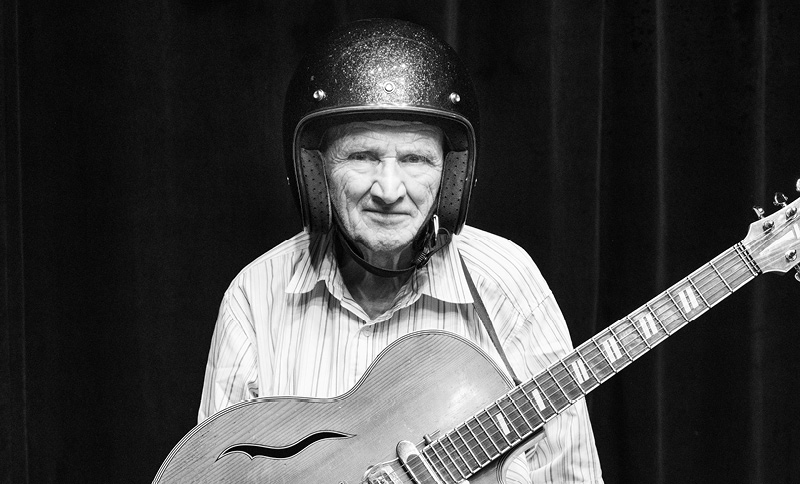
Milan Kašuba 85
30/4/2025, 19.30
Cabaret des Péchés
Milan Kašuba, one of the oldest active Czech musicians, is an essential figure in Brno‘s jazz scene. His birthday celebration will honor his immense talent and unwavering dedication—qualities characteristic of the generation that emerged in the 1960s.
Though initially it seemed he was not destined for a musical career—he was trained as a goldsmith—Kašuba‘s musical gift became apparent early on. He attended violin lessons for seven years at his parents‘ request, and while studying goldsmithing in Prague, he borrowed a guitar from a friend. Soon, he was playing his favorite songs by Jaroslav Ježek, which made it clear that music would be his true calling.
Kašuba‘s early concerts took place in Prague, but upon returning to his hometown of Brno at the end of the 1950s, he continued performing, primarily in cafes. From 1962 onwards, he worked as a professional musician with a permanent engagement at the Večerní Brno theatre and served as a versatile studio musician for radio.
In the early 1970s, Kašuba took a break from performing to refine his skills. However, in the latter half of the decade, he returned to the scene, marking a significant phase in his artistic life. He formed a guitar duo with Jiří Adam, which later expanded to include violinist Jan Beránek and singer Mirka Křivánková, thus creating the legendary band Ornis. Although Ornis was active for just over three years, it earned respect both locally and abroad. After the band‘s disbandment, Kašuba embarked on a solo career, collaborated with Gustav Brom’s big band, and performed with various formations on the Czech club and festival scenes. He also began recording regularly and, from the mid-1990s, began teaching at music schools in Brno, later continuing his work at the Janáček Academy of Music and Performing Arts (JAMU).
For his birthday concert, Milan Kašuba will be joined by a lineup of jazz musicians, some of whom are one or two generations younger than him: saxophonist Radek Zapadlo, multi-instrumentalist Jiří Slaví k, double bassist Peter Korman, and drummer Martin Kleibl.
Line-up:
Moravian jazz duo: Milan Kašuba – guitar & Petr Kořínek – double bass, Geraldine Schnyder –vocals, Jiří Slavík – piano, Radek Zapadlo – saxophone, Peter Korman – double bass, Martin Kleibl – drums

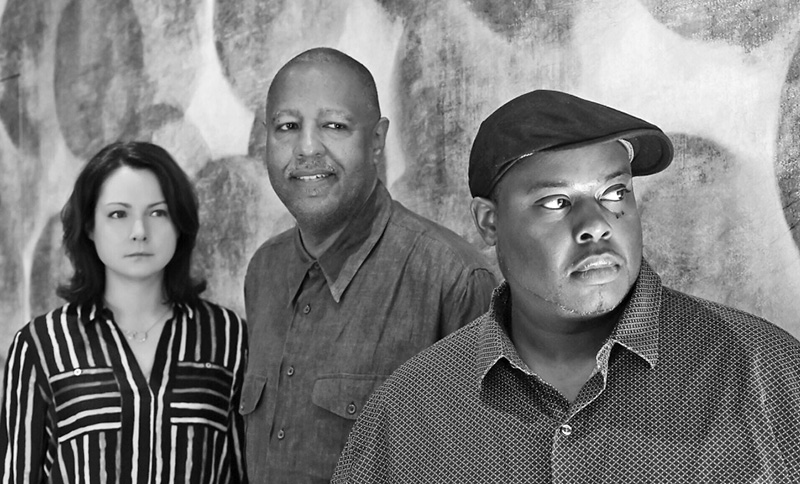
Kris Davis Trio
12/5/2025, 19.30
Cabaret des Péchés
At 43, Canadian pianist Kris Davis is one of the brightest stars in her generation of jazz pianists – and also one of the most industrious. Rarely does a year go by without a new release from her. If one year passes without an album, you can expect at least two the following year.
Since entering the recording industry in 2003 with her sextet‘s debut album Lifespan on the respected Fresh Sound label, Davis has released 25 albums as a leader or co-leader. This doesn’t include over two dozen additional recordings as a “sidewoman.” Few musicians are as prominent in contemporary jazz as Kris Davis.
Davis began studying piano at age six in a classical setting, but during elementary school, she discovered jazz, which completely captivated her – particularly the works of Herbie Hancock and Keith Jarrett. She later studied jazz piano in Toronto, then moved to New York, the “capital of jazz,” where she released her first album and quickly launched a meteoric career built on immense talent and hard work.
Davis has never confined herself to one genre. While she excels in traditional jazz, she’s also embraced avant-garde tendencies, including playing prepared piano and composing unique orchestrations, such as a suite for four bass clarinets, guitar, piano, organ, and drums. It’s no surprise that she is part of John Zorn’s circle, performing his Bagatelles around the world, including at the Bagatelles Marathon in Prague in 2019.
Her albums consistently appear in annual jazz rankings. Her 2022 record New Standards Vol. 1, a collaboration with trumpeter Nicholas Payton, won the Grammy Award for Best Jazz Instrumental Album. Two years earlier, Davis was named Best Pianist by DownBeat magazine, sharing the honor with Kenny Barron after receiving the same number of votes.
Davis’ latest album, Run The Gauntlet (her fifth release on her own label Pyroclastic, founded eight years ago), was recorded in a trio with bassist Robert Hurst (who has worked with Wynton Marsalis, Branford Marsalis, and Diana Krall) and drummer Johnathan Blake (known for his work with Randy Brecker, Chris Potter, and Donny McCaslin). This stellar trio will perform at JazzFestBrno.
Line-up:
Kris Davis – piano, Robert Hurst – double bass, Johnathan Blake drums

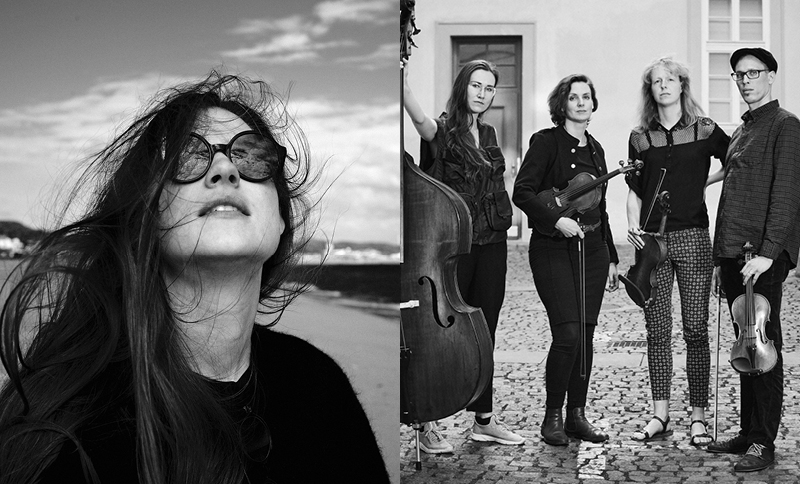
Nikol Bóková Trio
Klára Pudláková & MAOMAH
14/5/2025, 19.30
Cabaret des Péchés
Pianist and composer Nikol Bóková is one of the most prominent and successful creators of her generation. Just last year, she performed in several countries, including Japan, Austria, Germany, the United Kingdom, and Italy. She performs and records both in various ensembles and as a solo artist, and she will bring the stable lineup of her Trio to Brno.
Bóková‘s musical range is vast, extending from Baroque to contemporary music of the 19th and 20th centuries. At the same time, she is a remarkable composer of her own unique music.Her work reflects her classical music education, blending elements of jazz, classical, and popular music, as well as modern rock and minimalism. Her debut album Inner Place, released in 2019, was nominated for the Anděl Award and marked the beginning of a rapid series of recordings. These include albums created with her trio, featuring Michał Wierzgoń and Martin Kocián, as well as collaborations with other musicians such as guitarist David Dorůžka, double bassist Jaromír Honzák, and world-renowned horn player Radek Baborák. Her discography also includes solo piano recordings and explorations into classical music, spanning from Bach‘s harpsichord works to Wagner‘s and Strauss‘s orchestral compositions arranged for solo piano.
Nikol Bóková has received numerous awards from the professional community and is recognized as an emerging figure on the Czech music scene and internationally.
Line-up:
Nikol Bóková – piano, Martin Kocián – double bass, Michał Wierzgoń – drums
The project was founded by double bassist and composer Klára Pudláková as part of her master’s program at the Jazz Department of the Academy of Performing Arts in Prague (HAMU). The original lineup consisted exclusively of string instruments, and in its next phase, wind instruments were added to the ensemble.
The creative principle behind Maomah is the development of original compositions rooted in classical music, enhanced through improvisation and rhythmic freedom inspired by jazz. With a double bass and three violins, the group adheres to the principles of composition, while also embracing the skills and experiences of the musicians to explore free improvisation. As a result, Klára Pudláková’s compositions—described by her as a musical mystery—sound unique with each performance. The musical expression and dynamics are not dictated by sheet music but by the mutual interaction of the musicians in the moment. This approach is reflected in the current lineup, where the original string ensemble (double bass and three violins) has been expanded to include wind instruments (saxophones, clarinet, and trombone).
Klára Pudláková is a quintessential representative of today’s young generation of musicians, who rarely limit themselves to a single genre. She navigates a wide spectrum of styles, blending them and refusing to play by conventional rules. This versatility is evident not only in Maomah, which is closest to classical music in her portfolio, but also in the alternative folk project Avokaduu with Anežka Matoušková, as well as in other ventures that touch on jazz and improvised music, such as Uthando, Pudlax, and her duo with saxophonist Michal Wróblewski.
Line-up:
Klára Pudláková – double bass, Jana Havláková – violin, Milan Jakeš – violin, Anna Romanovská – violin, Michal Wróblewski – saxophon, Štěpán Janoušek – trombone

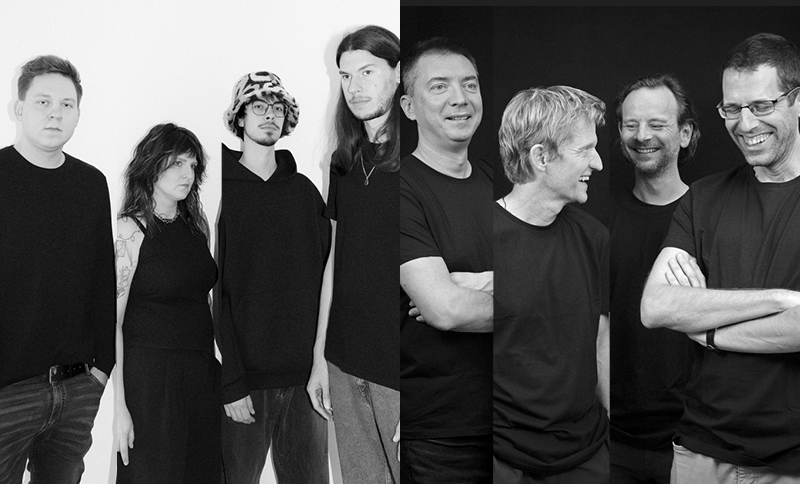
Helicopets
David Dorůžka & Piotr Wyleżoł Quartet
21/5/2025, 19.30
Cabaret des Péchés
The founder and leading figure of the group Helicopets is Polish guitarist and composer Adam Baran, a young musician with a wide range of influences who stands out as one of the most promising Polish creators in the realm of jazz-inspired music.
Adam grew up listening to Björk, Radiohead, and The White Stripes. In his twenties, he pursued jazz education, graduating from the Karol Lipiński Academy of Music in Wrocław and the Karol Szymanowski Academy of Music in Katowice. During this time, he became deeply influenced by albums from John Coltrane, Tomasz Stańko, and Bill Frisell, which guided his interest toward improvised music—a passion he has since fully embraced.
In addition to founding Helicopets, a group where he experiments with improvisation, electronic sounds, and unconventional arrangements (featuring guitar, bass guitar, bass clarinet, percussion, and electronics), Adam collaborates with alternative bands like Patrick the Pan and Swiernalis, as well as singer Alicja Szemplińska. He has also worked both in the studio and on stage with legendary jazz musician Michał Urbaniak, blues virtuoso Roman Puchowski, and many others.
Adam Baran is well known for his tireless concert activity, performing in clubs and at major European festivals. He has appeared at events such as Budapest’s Sziget Festival and Katowice’s Off Festival. In 2024, his band Helicopets was selected by celebrated trumpeter Nils Petter Molvær to compete in the finals of the Jazz Juniors Competition, where they received a special award. As a result, in 2025, Helicopets will embark on a European tour.
Line-up:
Adam Baran – electric guitar, Panilas – bass clarinet, Józef Biegański – percussion, electronics, Piotr Zygma – bass guitar
The performance of Helicopets is co-financed by the Ministry of Culture and National Heritage of the Republic of Poland from the Culture Promotion Fund.
![]()
On the Czech music scene, guitarist and composer David Dorůžka has long been a prominent figure, with each of his albums receiving close scrutiny. This will undoubtedly be the case for his latest release, When the Child Was a Child, which will be launched at a concert during JazzFestBrno and is being released by Bivak Records.
Dorůžka’s “Polish quartet,” featuring pianist Piotr Wyleżoł and other top-tier, experienced musicians, has been enriched by years of international collaboration. Musically, the new album returns to a purely acoustic sound, blending jazz tradition with elements of folk music, delivering a lyrical expression that distinguishes it from Dorůžka’s previous album, Andromeda’s Mystery, which explored rock influences. Nevertheless, fans can still expect surprises on When the Child Was a Child. One highlight is the participation of young harmonica player Nicholas Patu, who not only contributed to the recording but will also join the quartet as a guest at their Brno concert. In addition to original compositions, the repertoire promises a surprising interpretation of a piece by American multi-instrumentalist Sufjan Stevens.
David Dorůžka first made his mark on the Czech music scene during his teenage years. After studying at Berklee College of Music, he gained experience in New York and Paris. He debuted in 2004 with the album Hidden Paths, which earned him his first—and certainly not his last—Anděl Award. Over the years, he has collaborated with prominent musicians from the Czech Republic, Europe, and beyond, including world-class drummers like Jorge Rossy and Jeff Ballard. He is widely regarded as one of the most influential creators of the Czech jazz middle generation.
Line-up:
David Dorůžka – guitar, Piotr Wyleżoł – piano, Michał Barański – double bass, Michał Miśkiewicz – drums, & special guest Nicholas Patu – harmonica
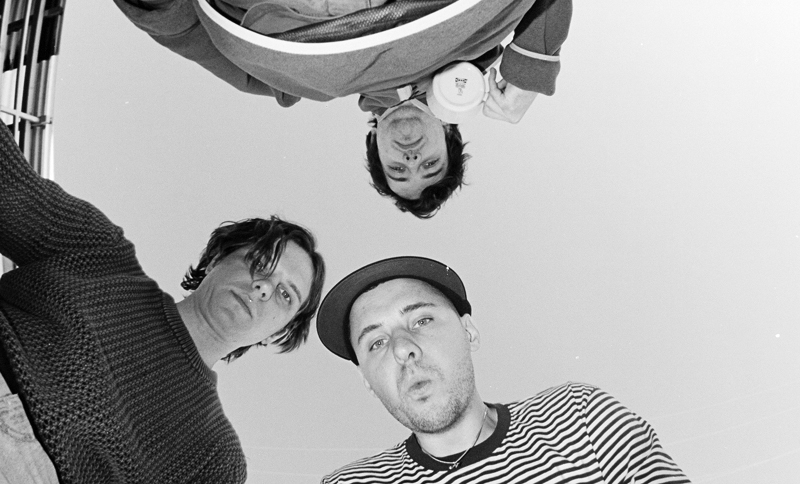
BadBadNotGood
24/6/2025, 19.30
Sono Centrum
The ideal band for 2025. A phenomenal cocktail of styles that fans of various musical expressions can agree on. It’s no coincidence that the band already has two Grammy Awards and three more nominations to its name.
Canadian band BadBadNotGood is a dual entity. On one hand, they are an instrumental trio; on the other, a production team – and they excel in both areas. As producers, they primarily operate in the hip-hop sphere, having collaborated with major figures such as Tyler, The Creator (who significantly helped kick-start their career), Kendrick Lamar, Ghostface Killah, and Charlotte Day Wilson.
The instrumental group was founded in 2010 by bassist Chester Hansen, keyboardist Matthew Tavares, and drummer Alexander Sowinski. In 2016, frequent collaborator and saxophonist Leland Whitty joined the band, while Matthew Tavares gradually stepped back from being a full-time member and, since 2020, has remained more of a „man behind the scenes.“ Though they met while studying jazz at Humber College in Toronto, it was actually their love for hip-hop that brought them together. However, their taste in music is vast. Beyond the aforementioned styles, they have backed R&B singer Frank Ocean and even recorded a cover of the English indie rock band My Bloody Valentine for their second album. Clearly, they are driven by music itself –whatever they find inspiring – while genre labels remain secondary.
This attitude extends to their relationship with jazz, a genre they are often associated with – perhaps simply because they are an instrumental band and master their instruments exceptionally well. Leland Whitty once commented: „All we‘re really trying to do is create something unique and honest. We don‘t belong to any particular category, nor do we follow any tradition or anything like that.“ Alexander Sowinski added: „We approach music with a jazz background, and we use the jazz language when composing. But we don’t consider ourselves top-tier musicians in that genre, nor do we see ourselves as its innovators. Jazz has its own history and evolution, and maintaining it requires certain prerequisites, including hours of daily practice on an instrument. That was never our approach – we’ve always been more interested in production, recording, and the conceptual creation of music rather than perfecting our solo performance. We simply see music as a whole, rather than as a puzzle of instrumental parts.“
It took BadBadNotGood some time to connect with audiences through their original, always progressive, and genre-defying music. But today, after six successful albums, they are widely recognized as some of the most forward-thinking visionaries shaping the future of jazz fusion.
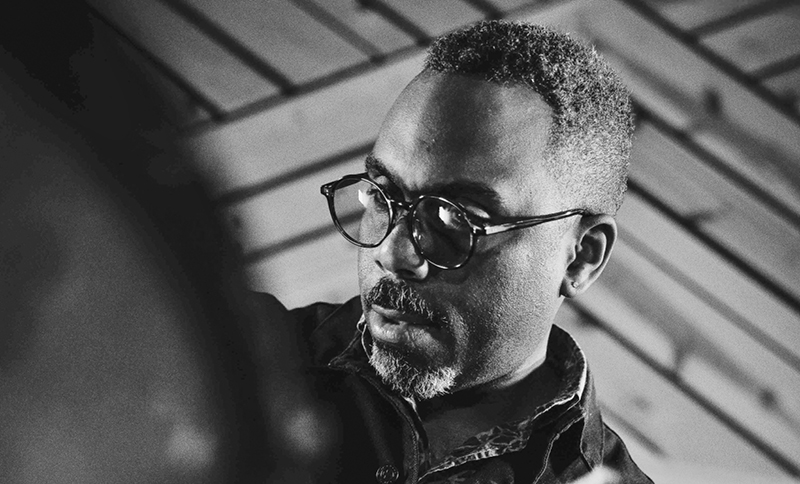
Nate Smith
9/11/2025, 19.30
Sono Centrum
In recent years, Nate Smith has become one of the most closely watched and influential drummers of his generation. This is not only because, alongside his other work, he has focused on creating a series of viral videos that have garnered millions of views. He is simply remarkable in every respect.
The now 50-year-old Virginia native started playing drums at the age of eleven, initially drawn to rock and funk. A turning point came at sixteen, when he heard Album of the Year, the famous 1981 recording by Art Blakey and the Jazz Messengers. He began to take jazz drumming seriously, though he also studied design and other artistic disciplines. His first major opportunity came when he performed with Betty Carter at the legendary Blue Note club in New York. This launched a remarkable era of collaborations with top-tier artists, through which he built a portfolio many would envy.
In 2003, the renowned bassist Dave Holland invited Nate Smith to join his quintet, and as a member he recorded two albums: Critical Mass (2005) and Pathways (2009). Around the same time, he began working closely with saxophonist Chris Potter, recording four albums with him between 2006 and 2015. His discography also includes individual recordings with stars such as Patricia Barber, Randy Brecker, Takuya Kuroda, and even Czech musician Karel Růžička Jr., with whom he recorded the album Grace & Gratitude for Animal Music.
Nate Smith never confined himself strictly to jazz boundaries, and the more experienced he became, the more he expanded his scope. That’s why his name can be found on albums by Paul Simon, Brittany Howard (lead singer of Alabama Shakes), and genre-less José James. Interestingly, one of his major non-jazz credits predates his professional drumming career: in 2001, he co-wrote and co-produced Michael Jackson’s song Heaven Can Wait, released on the Invincible album—one of the singer’s slowest tracks ever.
Nate Smith’s solo career also unfolds in this genre-blending, style-crossing spirit. His debut, KINFOLK: Postcards from Everywhere, earned two Grammy nominations. Speaking about his vision for the album, Smith said: “My goal was to start with the simplest elements—singable melodies with familiar harmonies—and use them to weave stories that felt nostalgic without being overly sentimental.” He received the same number of nominations for his follow-up project, Kinfolk 2: See The Birds. In addition to these well-known albums, he has released three more titles, all marked by a distinctive compositional and instrumental contribution.
At his JazzFestBrno concert, Nate Smith will perform in a trio with James Francies, a keyboardist signed to the prestigious Blue Note label, for which he has recorded two solo albums, and bassist Michael League, the driving force behind the highly successful and popular group Snarky Puppy.
Dominic Miller
15/4/2025, 19.30
Cabaret des Péchés
Adam Ben Ezra: Heavy Drops
8/4/2025, 19.30
Cabaret des Péchés
Jojo Mayer: Me/Machine
19/3/2025, 19.30
Divadlo Husa na provázku
Kamasi Washington
18/3/2025, 19.30
Sono Centrum
Dianne Reeves
16/3/2025, 19.30
Sono Centrum
Matteo Mancuso
13/3/2025, 19.30
Sono Centrum
Mammal Hands
1/2/2025, 19.30
Fléda
Sullivan Fortner Trio
18/2/2025, 19.30
Cabaret des Péchés
Maria Schneider & Oslo Jazz Ensemble
6/3/2025, 19.30
Cabaret des Péchés




